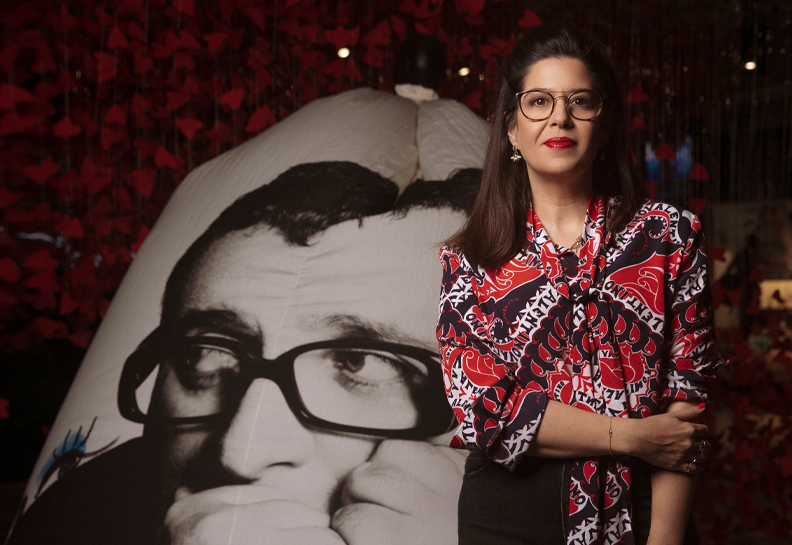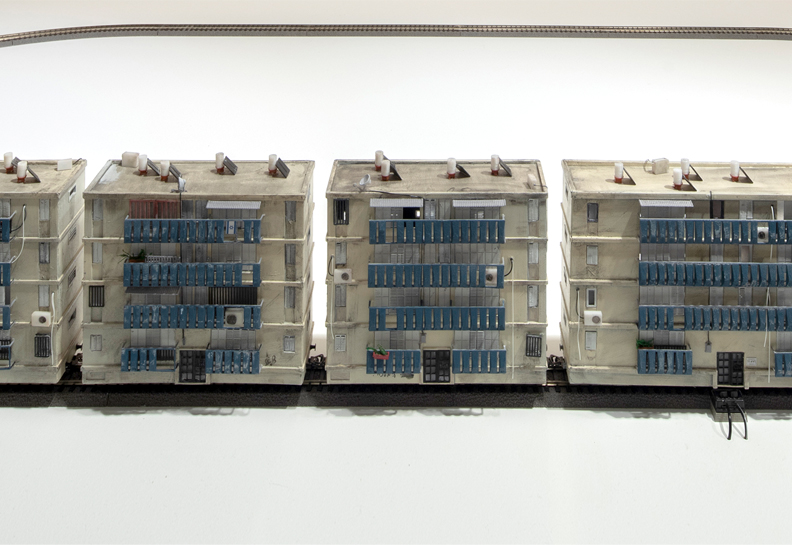The Department of Jewelry Design’s graduating class presented a variety of diverse design approaches and forms of expression that allow us to examine the world of jewelry design
The Passion for MaterialDepartment of Jewelry Design at Shenkar College of Engineering and Design A review of the 2010 graduates.
What makes jewelry interesting in terms of design? And what makes it desirable?Using expensive materials is not enough, nor is precise handcrafting and attention to detail. At Shenkar’s annual graduate exhibition, the Department of Jewelry Design’s eighth graduating class (headed by artist Sharon Keren) presented a variety of diverse design approaches and forms of expression that allow us to examine the world of jewelry design from a variety of perspectives.As with any design project, we can speculate about the source of inspiration, we can trace the research into the materials, and we can certainly examine the final object and its relevance to what is happening in the world of design today.However, since jewelry oftentimes appeals to our emotions as observers or consumers, and sometimes evokes a sense of desire and yearning, it is also important to examine what it is that makes it so.So, if using expensive materials is not enough, what is? Something in the combination of materials, in the silver and goldsmithing, the tactility, the size of the object and its proportions and balance, all undoubtedly contribute. And we cannot forget the connection a piece of jewelry makes with the human body. Unlike a sculpture, a piece of jewelry is also a wearable item and mandates some kind of reference to the body. At times it also marks the body’s continuation or change.One of the prominent trends this year was the search for new materials.Only a few projects this year made exclusive use of the traditional materials we are familiar with from the world of jewelry design, such as gold, silver, and gemstones. There is a general sense that this year immense effort has been invested in stretching the boundaries of the materials comprising the jewelry designer’s world.The search for new materials is not always a successful one, and at times the final product merely looks like an opportunity to experience the material.So, when is it successful?When the designer brings with him the tools from his world, like skilled silver and goldsmithing, precise handcrafting, and attention to the small but most important, details, such as connectors.Add to all these qualities the choice to use a different material that comes from a different content world, and the results are intriguing and extraordinary combinations. This is an elusive moment that is difficult to accurately define, in which something new is created.An example of this kind of combination can be seen in the work of Dikla Rosen. The project, entitled “8.5/5.5”, is influenced by impaired eyesight, a sense of eyes darting, seeing through a softened lens, and the transition between clarity and haziness. The technique used to produce the pieces comprises reproducing small, delicate elements, cast silver and brass, and mounting tiny feathers that have undergone a dye and comb process.
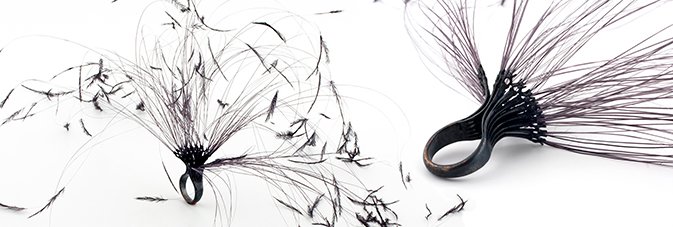
The final pieces include sculptures or “table objects”, and jewelry-cum-sculptures that definitely meet the criteria for jewelry, evoking a sense of yeaning in the viewer. The delicateness of the fine feathers, their repetitiveness and movement create motion and drama.In this work, as in others, we can see a direct connection with what is happening in today’s fashion world. Many designers are rediscovering feathers as a raw material for creating garments and accessories. The feathers convey a sense of freedom, lightness, movement, and buoyancy, and perhaps symbolize our desire to fly like a bird.
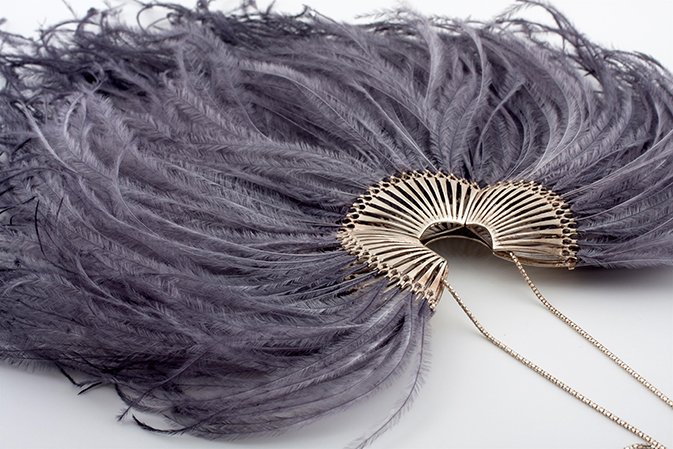
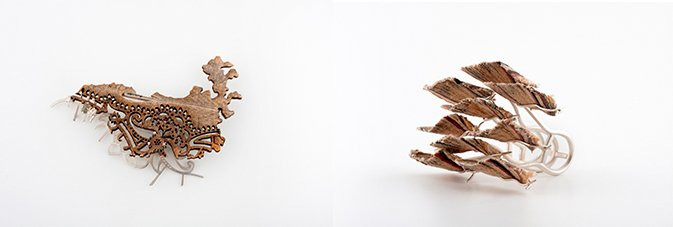
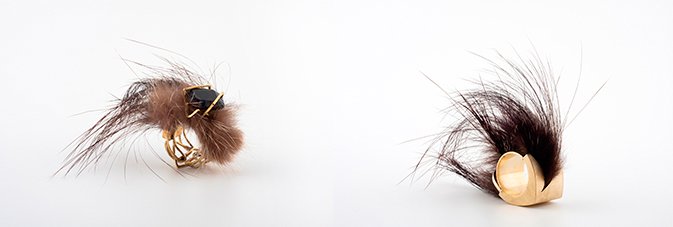
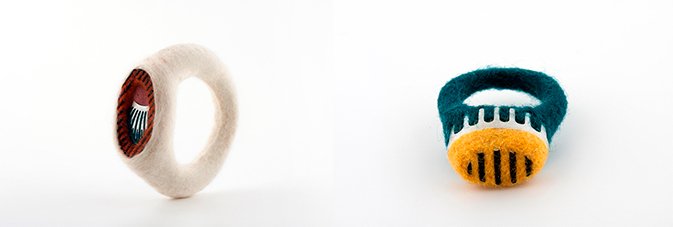
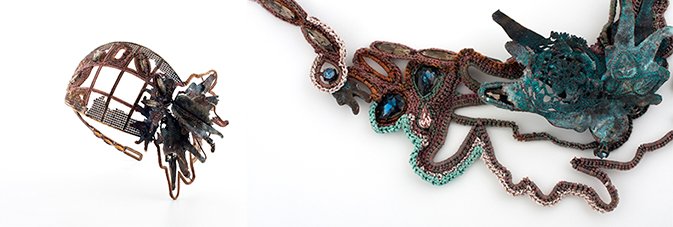
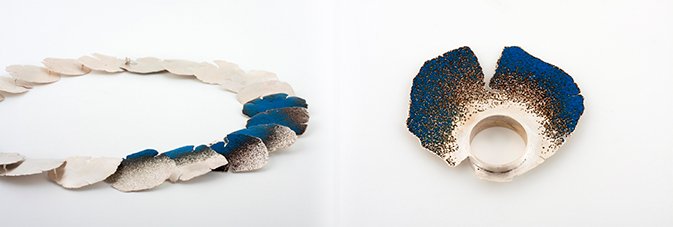
One way or another, the projects presented at the graduate exhibition attest to the fact that the Department of Jewelry Design not only enables a diverse and surprising variety of design approaches and different means of expression – traditional silver and goldsmithing methods alongside more industrial pieces – but also encourages a search for and use of new and unconventional materials in the sphere of jewelry design.Nevertheless, it is evident that there is no substitute for the designer’s skills as a craftsman, as a silver and goldsmith. The best projects are those that combine surprising materials with handcrafting to create pieces of jewelry that are works of art in their own right.
